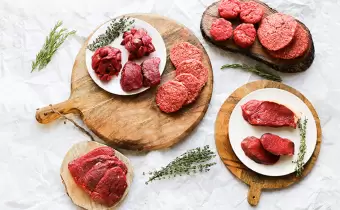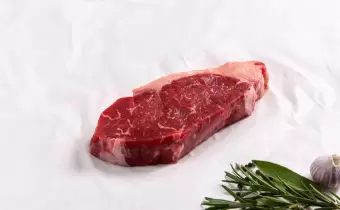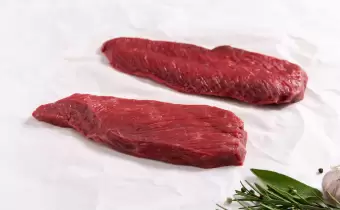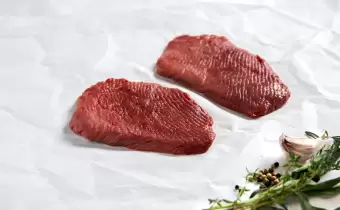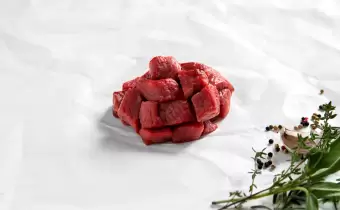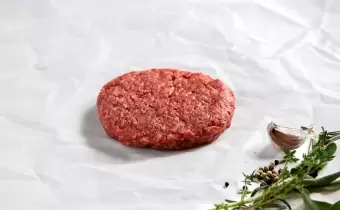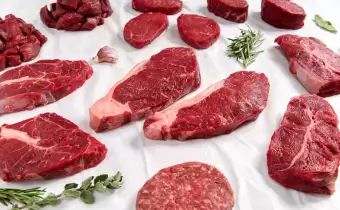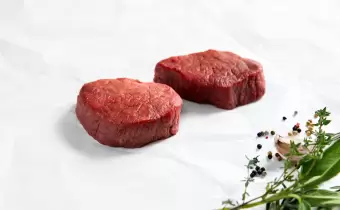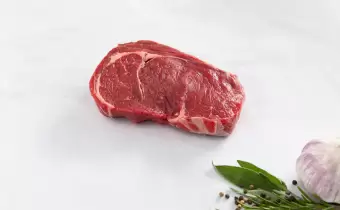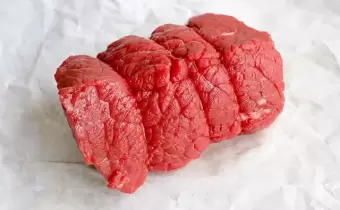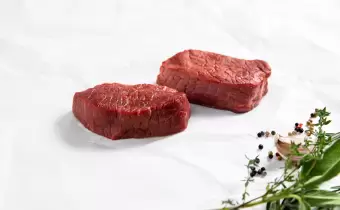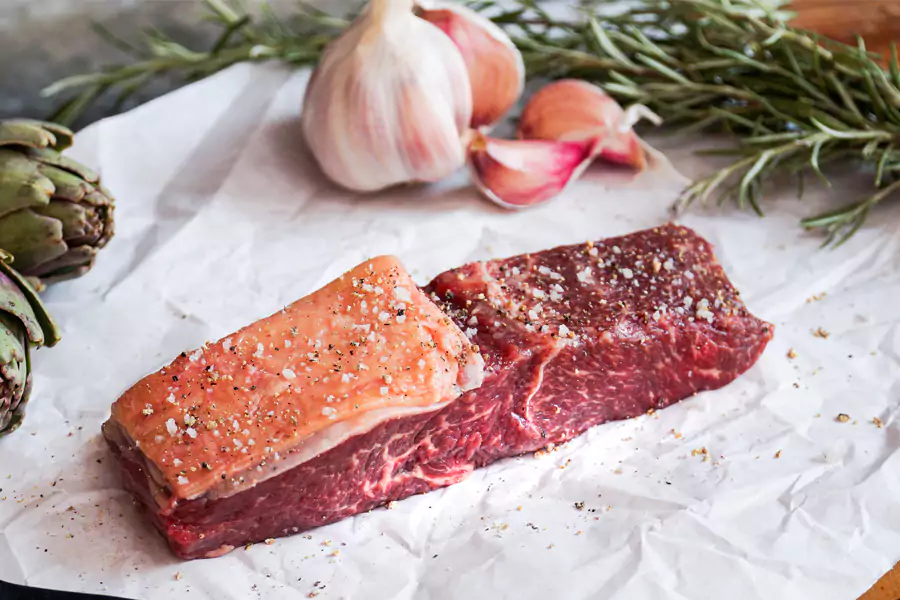
What is grass-fed beef?
Unlike “organic” and “free-range”, the term “grass-fed beef” is not legally defined and so different meat suppliers can use it to mean different things. Generally speaking, however, “grass-fed” refers to beef that comes from cattle that have primarily grazed on grass throughout the course of their lives. This is unlike the more common “grain-fed beef’ that you find in supermarkets; beef from cows that eat solely grain-based feeds composed of soy or corn.
Why choose grass-fed beef?
Grass-fed beef almost always contains a lower content of total fat than grain-fed beef, meaning that per gram, the calorific content of grass-fed beef will be lower. Beyond calorie count though, grass-fed beef is widely considered to be (1) healthier, (2) better tasting, and (3) more ethical than solely grain-fed beef!
Grass-fed beef is healthier for you
Besides overall fat quantity, it's also the specific make-up of fat from grass-fed beef that makes it healthier than grain-fed beef.
- Firstly, the ratio of Omega-3 to Omega-6 fatty acids is about 5 times greater in grass-fed beef. This higher ratio has consistently been found by academic studies to provide significant benefits for protecting against heart health problems, cancer, arthritis and diabetes.
- Secondly, grass-fed beef on average contains 100% more Conjugated Linoleic Acid (CLA) than grain-fed beef. Much scientific research has found to protect against cancer, cardiovascular disease, high blood pressure, high cholesterol, osteoporosis, insulin resistance and food-induced allergic reactions.
- Finally, the natural feed that grass-fed cows enjoy means that their beef has a higher density of carotenoid precursors to vitamin A, such as beta-carotene as well as the vital antioxidant, Vitamin E. It's the former of these which contributes to the orange tones of the fat typically found on premium grade, grass-fed beef!
Grass-fed beef is better tasting
Because grass-fed beef comes from cows that are usually free-range, their muscles are put to significantly more work than feedlot cattle, making their beef significantly more lean with less marbling. Marbling (those strands of intramuscular fat) is the primary source of taste in grain-fed beef, giving it those slightly sweeter tones you’ve no doubt tasted in the supermarket, grain-fed beef.
Because grass-fed beef has significantly more minerals and vitamins (besides it’s subtle yet also present fat contents), the range and richness of flavours — often described as “meaty”, “gamey” or “premium” – is stronger. It is these taste profiles that strongly attract Michelin Star Chefs to grass-fed beef.
Grass-fed beef is more ethical
As previously mentioned, grass-fed beef comes from cows that have lived free-range lives, able to exercise natural behaviours such as foraging and grazing at will. More broadly, their stress levels are lower throughout life and have been consistently proven to be far less likely to catch illnesses. This is in contrast to grain-fed cows that usually spend their days in feedlots, eating grains that are very high in calories, encouraging them to grow at harmfully fast rates, diminishing the strength of their underdeveloped joints and in turn their natural mobility.
Beef

- Location: Offwell, Honiton
- Breed: South Devon
- Earnumber: 400111
- 7 different meat-cuts
- 28 meals / 3.5 Kg
- Final Animal Delivery Date 22 July

- Location: Offwell, Honiton
- Breed: South Devon
- Earnumber: 400111
- 10 different meat-cuts
- 56 meals / 7 Kg
- Final Animal Delivery Date 22 July

- Location: Chard, Somerset
- Breed: British Blue
- Earnumber: 301893
- 9 different meat-cuts
- 52 meals / 7 Kg
- New and improved box composition


